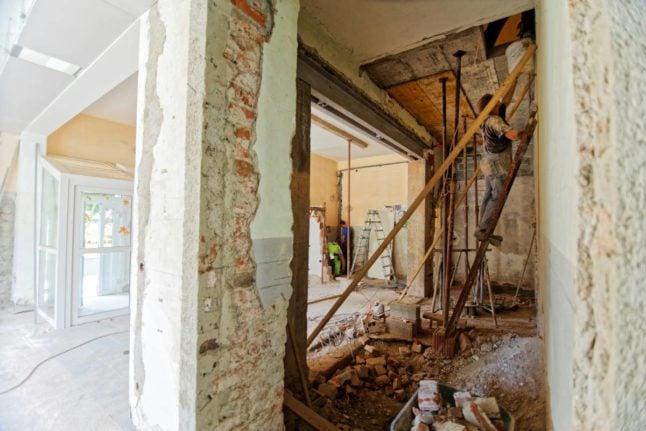If you’ve relocated to Norway from warmer parts of the world, mould might not be among the first things that come to mind when it comes to tenancy disputes.
However, Norway is a country with generally high precipitation levels, especially in its western and central regions.
Mould is often caused by several factors. The first is usually the local weather, but equally important are the overall condition and circumstances of the property (for example, if you’re living at the ground floor level, you may experience higher humidity) and how you, as the tenant, use it.
But what should you do if you get a mould problem in your rental home?
The starting point
Under Norwegian regulations, the initial responsibility for ensuring that there’s no mould in a rental property falls on the landlord.
They are responsible for ensuring that the unit has all the essential systems in place to prevent mould from appearing, such as standard ventilation and heating.
You’ll also need to invest in a dehumidifier in some buildings.
If you expect your home to have a somewhat high humidity level, the 2,000-4,000 kroner price tag will be well worth it as a mould prevention measure.
That’s why many tenants in Bergen in western Norway consider these devices a must-have.
In any case, if you notice mould in your rental home, notify the landlord as soon as possible. If not addressed immediately, it can quickly spread and cause extensive damage.
Your responsibilities
Are you ensuring a reasonable level of ventilation in your home? Do you let fresh air in and keep the in-built ventilation openings unobstructed and open?
Have you left some space between the furniture and the outer walls? Are you making sure that your home is well-heated?
READ MORE: Landlord or tenant: Who pays which costs in Norway?
If you answered negatively to any of the questions above, you might be at risk of mould in your home.
As the Rent Disputes Tribunal (a state-run entity under the Norwegian Ministry of Local Government) points out on its website, mould thrives on water and temperature, so if you notice high humidity levels in your rental, take action and reduce moisture.
Dealing with mould as part of maintenance
When it comes to maintenance, both the tenant and the landlord have certain rights and obligations.
Unless there’s a different agreement or contract in place, the landlord will generally need to take care of maintenance.
You’ll still need to look after items and elements that don’t fall in the category of fixed property.
Accidental damage repairs don’t fall under maintenance – so you’ll need to cover these expenses. The same is true if you don’t properly care for the property, resulting in mould spreading in the rental.
Resolving (mould) disputes with your landlord
In many cases, disputes with your landlord regarding mould issues can be resolved through open communication and a clear understanding of both parties’ rights and obligations.
Here, addressing concerns swiftly and documenting any communication or actions taken regarding the problem is crucial.
READ MORE: The most common disputes between tenants and landlords
Also, if initial attempts to resolve the dispute fail, you should consider seeking outside assistance – Leieboerforeningen, a national organisation for tenants, and Forbrukerrådet, the Norwegian Consumer Council, can both point you in the right direction.
One avenue for resolving disputes is to submit a complaint to the Rent Disputes Tribunal, which serves as a neutral party to help resolve such disagreements when it comes to rental issues, including mould-related concerns.
You’ll need to present your case to the tribunal, which means you’ll have to provide evidence and documentation to support your claims.
Extreme cases: Termination of a tenancy contract due to mould
In extreme circumstances, you, as the tenant, have the right to terminate the contract with immediate effect due to mould.
READ MORE: How to get out of a rental contract in Norway
What constitutes extreme circumstances, you ask?
Among other things, the severity of the mould problem and how long the issues have lasted without the landlord rectifying the situation (in cases where such measures fall under their responsibilities).
In any case, the mould issues need to constitute a severe breach of contract if you want to use them as grounds to terminate the lease with immediate effect.
If you’re in the right, you will not be obligated to pay rent after leaving the property, and you might also be able to claim compensation for the costs you incurred due to the situation.
However, if you terminate the tenancy agreement without having a right to do so, your landlord may try to claim both rent and compensation for incurred costs and other expenses.
It’s always a good idea to consult a legal professional if you’re unsure whether this applies to your case.



 Please whitelist us to continue reading.
Please whitelist us to continue reading.
Member comments